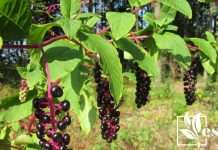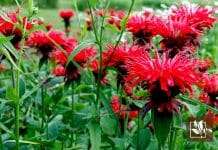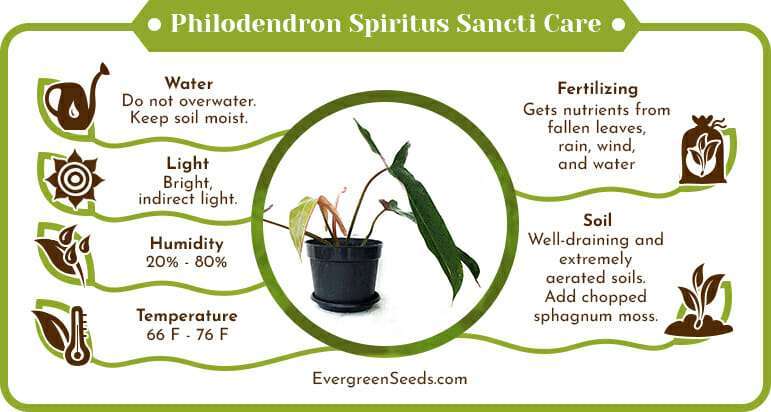 The Philodendron spiritus sancti is a hemiepiphyte. This means that these Philodendron genus plants can either start as seeds and climb up trees or other plants, or they can start as an epiphyte before establishing their roots.
The Philodendron spiritus sancti is a hemiepiphyte. This means that these Philodendron genus plants can either start as seeds and climb up trees or other plants, or they can start as an epiphyte before establishing their roots.
Your home garden will surely stand out if you take proper care of this air-purifying plant according to the guidelines contained in this article.
JUMP TO TOPIC
Philodendron Spiritus Sancti Care
Gardening experts boast of the easy-care nature of Philodendron spiritus sancti. Let’s explore how you can take care of this plant to get the best out of it.
 Light Requirements
Light Requirements
Philodendron spiritus sancti thrives under bright, indirect light. However, you can expose your plant to direct sunlight in the morning, when the sun is not as harsh as to scotch its leaves.
Try to make sure that the light source hits from above the leaves. This will encourage upward growth. This will give your plant a better and more even shape than when the light source hits sideways. If the only available possibility is a sideway-light source, be sure to rotate the plant regularly to enhance regular growth.

While this is an option, remember that it might cause stress and other problems in the long run. Therefore, we do not recommend this strategy. The Philodendron spiritus sancti is a delicate plant, so you should accommodate its needs as best as possible.
 Water Requirements
Water Requirements
Watering the Philodendron spiritus sancti can be tricky because you need to be careful not to overwater your plant. At the same time, make sure you are not depriving it of the moisture it needs. Maintain a watering frequency that keeps the soil of your plant moist, such that you can feel the wetness of it with your hands.
Never let your Philodendron spiritus sancti stand in water because this creates waterlogging conditions that hinder proper aeration. The rule of thumb is that the roots of your plant should neither be too dry nor too wet. Taking extra care of watering your plant properly will allow the Philodendron spiritus sancti to stick around for a longer time and produce better inflorescences.
Estimating the moisture content of your plant’s soil can be difficult. Getting a tensiometer—an instrument that can test the soil’s moisture—can make the moisture estimation much easier and more accurate. Based on the readings that you get from the tensiometer, you can create the best watering schedule for your gorgeous Philodendron spiritus sancti.
 Temperature Requirements
Temperature Requirements
The Philodendron spiritus sancti grows well in temperature ranges between 66 °F and 76 °F in its natural habitat. For this reason, we recommend that you imitate these conditions for excellent growth results.
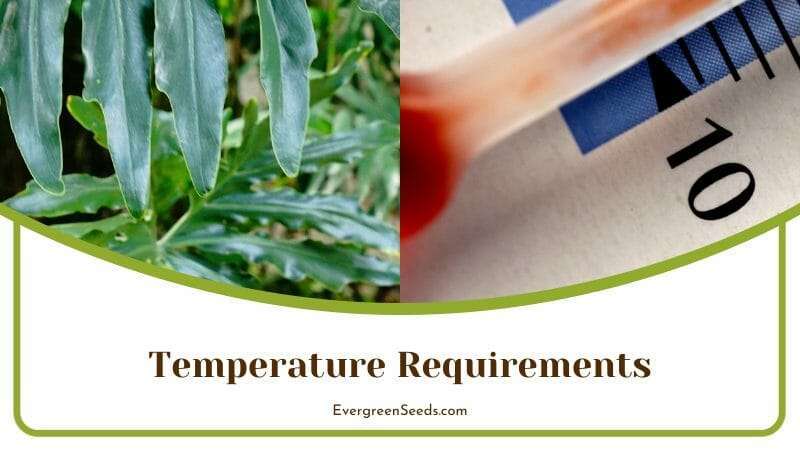
These values derive from the recorded temperatures that experts deem as conducive for the growth of Philodendron spiritus sancti. The highest recorded average temperature that will make your Philodendron spiritus sancti thrive is 75.74 °F, while the lowest is 66.02 °F.
Fluctuating temperatures do not do well for Philodendron spiritus sancti. It is, therefore, important to maintain constant temperatures that are supportive of the plant’s growth.
 Humidity Requirements
Humidity Requirements
In Brazil, the Philodendron spiritus sancti grows under humidity conditions that are a little lower than 80 percent. However, this plant can tolerate low levels of humidity, even around 20 percent. All you need to do is gradually increase its tolerance to the humidity condition that you have in your home.
As is the case with temperatures, Philodendron spiritus sancti is not happy when you fluctuate the humidity conditions around it. Therefore, you should maintain humidity at relatively constant levels.
 Soil Requirements
Soil Requirements
Well-draining and extremely aerated soils are the best choice for your Philodendron spiritus sancti.
A mixture of charcoal, orchid bark, a little perlite, and soil provides a conducive growth medium for your plant. You can also add some chopped sphagnum moss to your mix. Perlite modifies the substructure of any soil mix, thereby enhancing aeration and drainage properties, and avoiding compaction. Orchid bark with charcoal enhances moisture retention.

Another alternative soil mix that you can consider contains sphagnum moss, perlite, and some coco chips. Such a mix creates enough air pockets to prevent the development of root rot. Other growers of Philodendron spiritus sancti prefer to use 100 percent sphagnum moss.
 Fertilizer Requirements
Fertilizer Requirements
The Philodendron spiritus sancti does well with little fertilizer or even with none at all. In its natural habitat, this plant gets its nutrients from fallen leaves, rain, wind, and water and it seems to do pretty well.
Therefore, a soil mixture that contains organic matter could be all that your plant needs. However, adding a little fertilizer might increase the growth of your plant’s foliage, making it look dazzling.
If you decide to add fertilizer to your plant, the requirements will depend on the type of water that you give to your plant. If you use distilled water for watering your Philodendron spiritus sancti, then you might need to add a liquid fertilizer regularly to make up for the lost nutrients.
Repotting
When the roots of your Philodendron spiritus sancti begin to protrude through drainage holes, then your plant is due for repotting. Philodendron spiritus sancti does not grow well when it is root-bound.
For Philodendron spiritus sancti to grow strong, you will need to put it in a pot that allows for free circulation of air and proper draining of water. Some hobbyists even add holes to the sides of the pot, in addition to the ones on the bottom.
When it is time, you should transfer your plant to a larger pot with these properties. Also, consider adding a podium, stick, or moss pole for your Philodendron spiritus sancti to vine along. An alternative is to use a hanging basket so that your plant will fall down the basket’s sides.
Propagation
The only feasible ways to propagate your Philodendron spiritus sancti is through stem division and air-layering. The process often takes a long time and can appear complicated to beginners and experts alike.
This partly explains why the plant is quite a rare gem. However, with practice, you will get the hang of the art of propagating Philodendron spiritus sancti and create your stock.
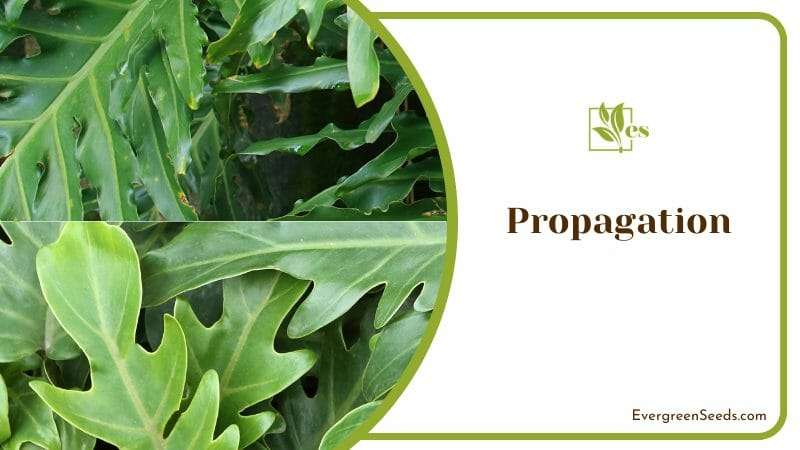
You should know that it takes very long for the cuttings to develop roots. This makes air-layering a better option. With this method, at least you get to see the new leaves and roots before you chop your main plant into pieces.
Please take note that propagating Philodendron spiritus sancti is challenging but not impossible. Many professionals have multiplied this plant before using stem division and air-layering.
If you are brave enough to take up the challenge of propagating Philodendron spiritus sancti, you might end up having other collectors getting the plant from you. Wouldn’t it be great to make some extra income from your precious plant?
Problems
Like any other houseplant, Philodendron spiritus sancti can be attacked by pests and diseases. Prevention is usually the best way of confronting these issues. The most effective strategy for preventing problems in the growth and appearance of your Philodendron spiritus sancti is following all the recommended tips for caring for the plant, from temperature requirements to propagation.
Let’s explore the problems that you should anticipate as you care for your little potted jewel.
– Toxicity
The Philodendron spiritus sancti is toxic to pets and humans. This is because the sap of the plant contains calcium oxalate crystals. This substance irritates the mouth, and sometimes, the skin. Chewing any part of the Philodendron spiritus sancti results in pain and swelling.
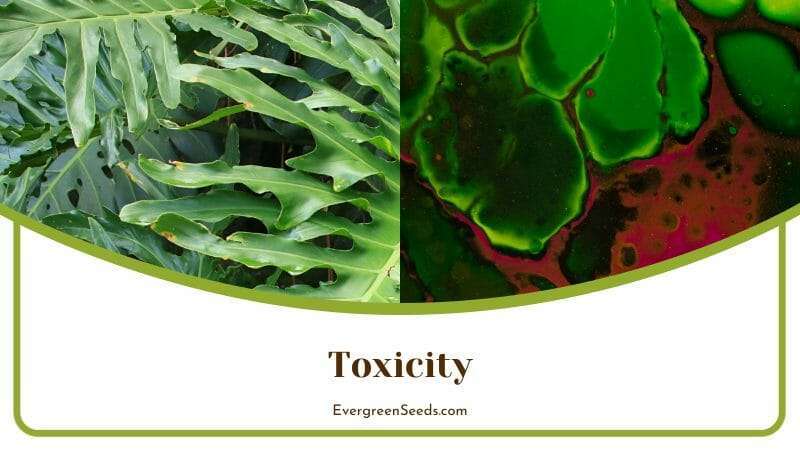
Be sure to keep your plant away from the reach of children and pets. Your bedroom and other rooms that are either relatively restricted or closely monitored are great options for keeping your Philodendron spiritus sancti.
– Root Rot
Root rot is one of the concerns that you have to deal with if you overwater your plant. To keep your plant wet but not soggy, make sure that the pot of your plant has enough drainage holes. Also, revise your watering frequency and see to it that you do not water your plant when its soil is still wet.
– Browning Leaves
Are the leaves of your Philodendron spiritus sancti turning brown? If yes, it is more than likely that you have been overwatering your plant. Sometimes, overwatering also causes brown patches on the leaves of your plant. This can be quite frustrating because it steals the beauty of your plant.
If only a few leaves have been affected, simply remove them and troubleshoot your watering patterns. You might also need to check the soil to see if it’s well-draining. Otherwise, you would have to consider changing it to aid better aeration. Also, check the draining capacity of the pot for your plant and make appropriate changes.
– Curling Leaves
If you notice curly leaves on your plant, know that this is either a sign that your plant has been exposed to cold or that its environment is too dry. To rectify this, avoid placing your plant where it can receive cold drafts. During the warmer seasons, mist your plant often to create a more humid atmosphere.
– Spider Mites
Spider mites are one of the pests that you should look out for when you are taking care of a Philodendron spiritus sancti. Develop a routine for checking your plants for any pests so that you can identify them earlier and deal with them before they cause much damage. Spider mites are sucking pests that depend on drawing sap from your plant for their survival.
These pests gradually weaken your Philodendron spiritus sancti and eventually kill it. This takes quite a long time, giving you some margin of maneuver for troubleshooting the issue.
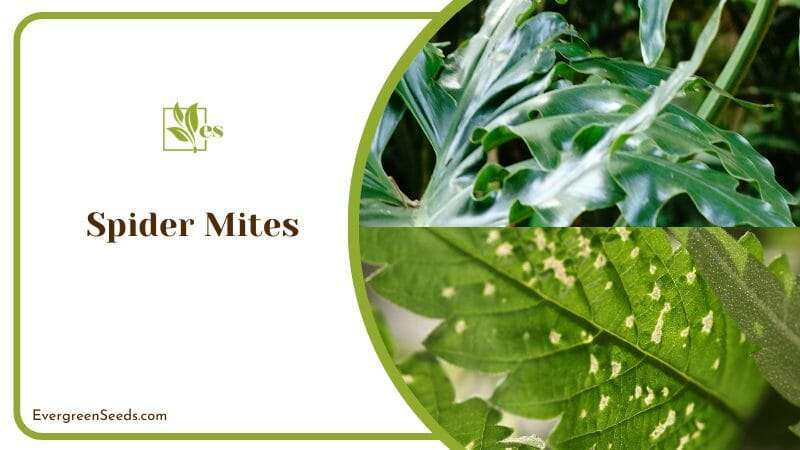
If your plant is attacked by spider mites, start your treatment procedure by showering the plant, especially when the infestation is still low. You can then spray a soap insecticide to further destroy the pests. Use neem oil as a follow-up treatment to ensure that the pests are completely eradicated.
Neem oil is an effective organic pesticide that blocks the breathing holes on pests, making it difficult or impossible for them to respire.
Other interventions against spider mites include dabbing the pests with 70 percent isopropyl alcohol. You can even prepare your own miticide at home by mixing these ingredients: a tablespoon of ground cloves, a tablespoon of ground cinnamon, and two tablespoons of Italian seasoning in one quart of water.
Boil the mixture and allow it to cool before adding two tablespoons of crushed, fresh garlic. Wait for a few minutes, strain, and add a few drops of dish soap. Transfer the mixture into a spray bottle, shake well, and spray the solution on your plant.
– Mealybugs
If you notice the attack by mealybugs in its early stages, you will notice some white spots on the leaves and stem of your plant. If you are a bit late, your Philodendron spiritus sancti will look like it is covered with snow. Don’t panic though, there are available strategies for dealing with this pest—especially when the infestation is still low.
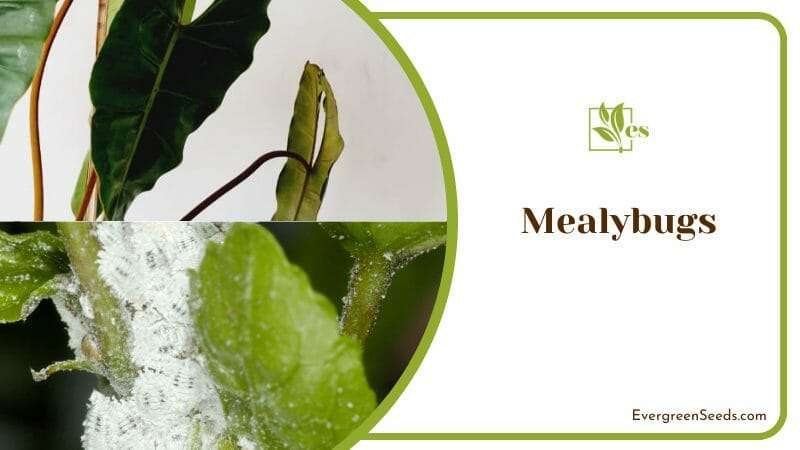
When the infestation is high, it might be wise to quarantine the affected plant or even get rid of it and start afresh. This helps to protect other plants from being affected too. Make sure to also thoroughly clean the spot where the affected plant was. Otherwise, you might risk having to discard all your plants: Mealybugs can easily spread among plants that are in the vicinity.
How to Tackle a Mealybugs’ Infestation
To begin treating your plant against mealybugs, wear your gloves and clean the leaves and stems of your Philodendron spiritus sancti using a cotton ball that is wet with 70 percent rubbing alcohol. Now, prepare a mixture of the rubbing alcohol, a few drops of mild dishwashing soap, and a quart of water and mix well.
Put the resulting solution in a spray bottle and thoroughly spray your plant. Do not forget the hidden points, such as the nodes and underside of leaves. Repeat this treatment twice a week until the mealybugs are completely eradicated.
You can check out the following philodendron varieties: philodendron white princess, philodendron silver stripe, philodendron shangri la, philodendron ring of fire, and philodendron jose buono.


